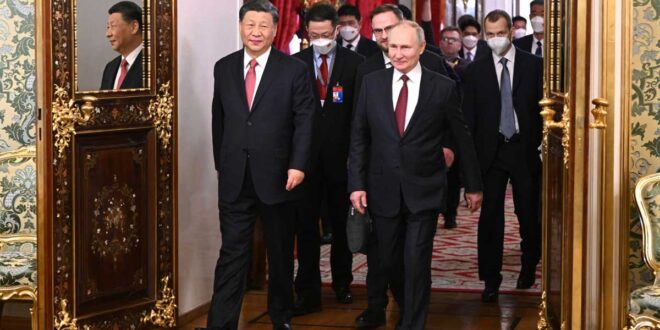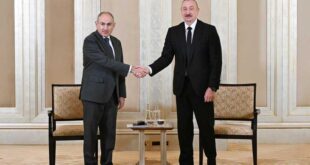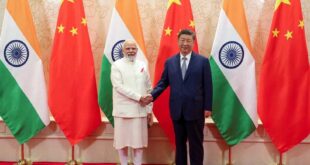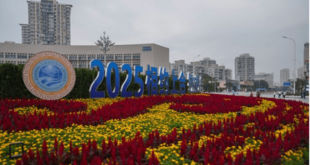In recent decades, both Russia and China have increasingly concentrated power in the hands of their respective leaders — Vladimir Putin in Russia and Xi Jinping in China. However, this centralization has come at the expense of institutionalized mechanisms that previously regulated leadership transitions. And this creates risks among major partners in an already fragile “axis of autocracy.”
As Putin and Xi extend their grip on power through purges of potential successors and personalized rule, both regimes risk encountering severe succession crises in the coming decades. A leadership vacuum in either state could not only disrupt domestic stability but also have profound implications for international security.
China’s Centralized Power and the Risk of Crisis
Under the leadership of Xi Jinping, China has departed dramatically from the post-Deng collective leadership model that ensured predictable transitions. Xi has dismantled many informal norms established since Deng Xiaoping’s era—most notably by removing presidential term limits and purging rivals from key positions.
These moves have allowed Xi to amass unprecedented control over the Chinese Communist Party (CCP), the state apparatus, and the military. Historically, Deng’s reforms institutionalized a system of “collective leadership” that provided checks and balances. Successors such as Jiang Zemin and Hu Jintao, though influential, were embedded within a network of established rules that facilitated orderly transitions.
Xi’s disruption of these norms has meant that potential successors are either sidelined or removed altogether, leaving the party without a clear heir. This centralization poses a critical problem: if Xi were to leave power—due to age, health, or unforeseen political pressures—the CCP might face a turbulent transition marked by fierce factional infighting.
Without a pre-determined or consensus-based mechanism for selecting a new leader, the internal dynamics of the party could unravel into a power struggle reminiscent of historical precedents during periods of political transition in authoritarian regimes.
Analysts have warned that such a leadership vacuum could lead to not only domestic instability but also create uncertainties in policy direction at a time when China’s role in global affairs is expanding.
Russia’s Personalized Regime & Succession Uncertainty
Similarly, Vladimir Putin’s Russia has long been characterized by a highly personalized regime sustained by the myth of autocratic competence, where power is maintained through the loyalty of a small inner circle rather than through robust institutional checks.
Over his more than two-decade tenure, Putin has systematically eliminated potential rivals and has relied on a network of close allies—often family members or long-time confidants—to secure his hold on power.
Putin’s approach has its roots in the turbulent post-Soviet era, a reflection of him being a product of the old Soviet empire. Although his early rule promised a degree of stability, concentration of power has created a system with weak formal institutions for leadership transition.
Unlike the more diversified bureaucracy of the Chinese party-state, Russia’s political structure has few mechanisms to absorb a sudden departure of a leader whose authority is heavily personalized. However, the invasion of Ukraine has changed the configurations of power under Putin.
Should Putin suddenly step down, die, or be forced out, the lack of a clearly institutionalized succession process could lead to a scramble among factions, potentially igniting a crisis or even a civil conflict.
Moreover, Putin’s dependence on personal networks has led to an environment of mistrust even within the elite. Purges and arrests of high-ranking officials, often on corruption or fraud charges, further erode the stability of the regime.
In a scenario where Putin’s authority is abruptly removed, these fractures could intensify into open power struggles, destabilizing Russia both politically and economically. Experts have noted that without a transparent and pre-arranged line of succession, Russia risks an internal conflict that could undermine its strategic posture internationally.
Comparative Dynamics & Implications for International Stability
While the domestic structures of China and Russia differ, both share the common risk of a leadership crisis. This is due to the over-concentration of power and the sidelining of succession planning.
In China, the elimination of institutionalized collective leadership means that Xi’s prolonged tenure may eventually result in a lack of experienced, high-ranking leaders capable of taking over. In Russia, the personalization of power and reliance on loyalty over competence have created a brittle system vulnerable to factionalism if the central figure disappears.
An unstable transition in either country would have significant international repercussions. For China, a leadership crisis could lead to policy uncertainty at a time when it is asserting itself on the global stage through initiatives like the Belt and Road Initiative (BRI) and a more assertive stance in regional territorial disputes.
Instability could affect global markets, supply chains, and international security, especially given China’s role as the world’s second-largest economy and a key player in global governance.
There is even a risk of the CCP starting a war along many of its flashpoints to redirect and channel public discontent. Renewed hostilities with India (i.e., the 1962 Sino-Indian War), an outright war to reclaim Taiwan, or any number of aggressive actions along its periphery are not out of the question.
In Russia, the potential for an abrupt or contested transition poses risks not only domestically but also in its relations with Europe and NATO. A power struggle in Moscow may embolden separatist movements in places such as Chechnya.
Given Russia’s significant nuclear arsenal and its strategic influence over Eastern Europe, any internal collapse or prolonged instability could trigger regional security crises, with spillover effects in Eastern Europe, Central Asia, and other parts of Russia’s periphery that would concern the broader international community.
Both regimes have relied on strong national narratives to legitimize their rule. In China, the CCP under Xi has promoted a narrative of rejuvenation and national strength, positioning the party as the sole guarantor of China’s future.
However, this narrative by the CCP rests on the assumption of smooth transitions and continuity—a fragile premise in a system where potential successors have been suppressed by Xi. Such mechanisms have been disrupted by Xi.
In Russia, Putin’s regime has long relied on the myth of restored Russian greatness and a return to superpower status. This narrative is intertwined with the cult of personality, a network of corrupt cronies, and an information environment that is bolstered by a tightly controlled media sector.
However, if the leadership were to change amid internal discord, these narratives could collapse, leaving the population and international partners uncertain about Russia’s future direction.
Managing the Risk: Possible Scenarios and Policy Responses
Looking ahead to the 2030s, several scenarios could unfold in either country:
1. Smooth Transition through Elite Consensus: It is possible, though increasingly unlikely, that both the CCP and Russia’s ruling elite could eventually reach a consensus to ensure a smooth leadership transition. In China, this might come from an emergent coalition that forces Xi to name a successor, while in Russia, a power-sharing arrangement could be engineered to avoid open conflict.
2. Fierce Power Struggle and Internal Conflict: In the absence of pre-arranged mechanisms, the sudden departure of Putin or Xi could unleash intense internal competition. In China, such a struggle might lead to factional realignments that temporarily destabilize governance. In Russia, the power vacuum might lead to a coup or even civil war, with competing factions fighting for control.
3. External Intervention or International Mediation: While less likely given the sovereignty sensitivities of both regimes, extreme instability might eventually prompt external actors to engage in diplomatic mediation. However, international involvement in domestic leadership transitions is fraught with risks and could be perceived as an infringement on national sovereignty.
For the international community, particularly Western policymakers, these potential crises underscore the need to prepare for periods of uncertainty. Engagement strategies might include bolstering diplomatic channels with both regimes to encourage gradual reforms and monitoring internal political dynamics closely.
Moreover, contingency plans for regional security in Europe and Asia must account for the possibility of a destabilized China or Russia that could disrupt global markets and security architectures.
Conclusion
The concentration of power in the hands of singular leaders—Xi Jinping in China and Vladimir Putin in Russia—has eroded institutional mechanisms that historically managed leadership transitions. Both regimes now face the risk of a leadership crisis in the 2030s, one that could lead to significant domestic instability and international repercussions.
As the global balance of power continues to evolve, the international community must remain vigilant. A leadership vacuum in either China or Russia would not only unsettle their domestic landscapes but also reshape the contours of international relations, potentially sparking regional conflicts and disrupting global economic stability.
In essence, while both China and Russia have enjoyed relative stability under their current leaders, the lack of clear, institutionalized succession plans renders them vulnerable to the inevitable challenge of leadership turnover.
Addressing this issue—either through internal reforms or through diplomatic engagement—will be crucial in preventing a future crisis that could destabilize not only these nations but also the broader international system.
 Geostrategic Media Political Commentary, Analysis, Security, Defense
Geostrategic Media Political Commentary, Analysis, Security, Defense





